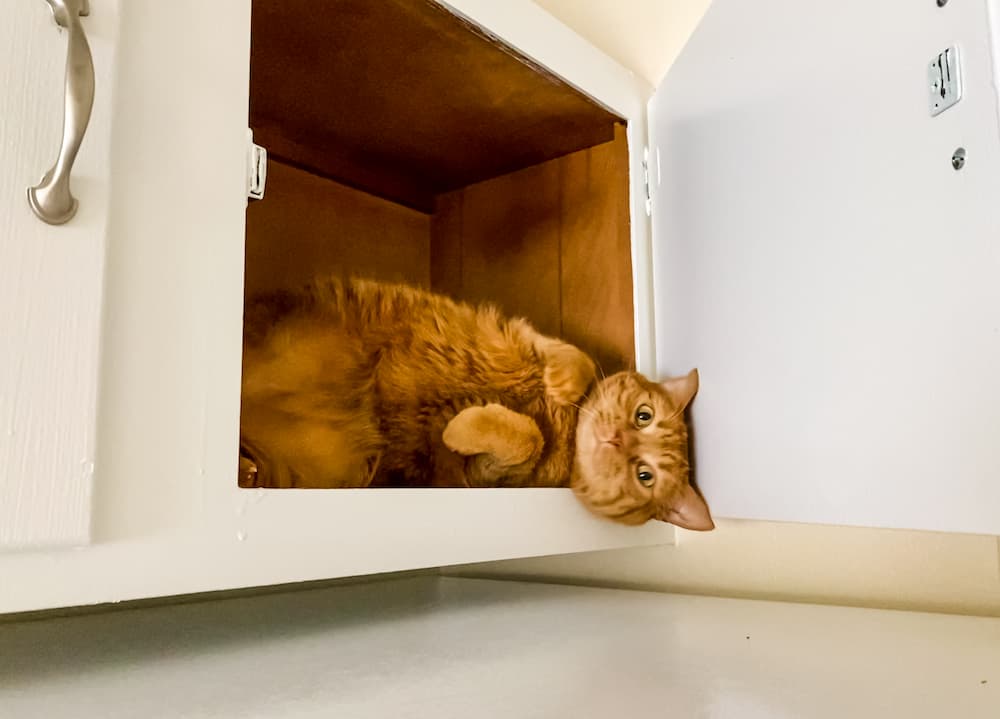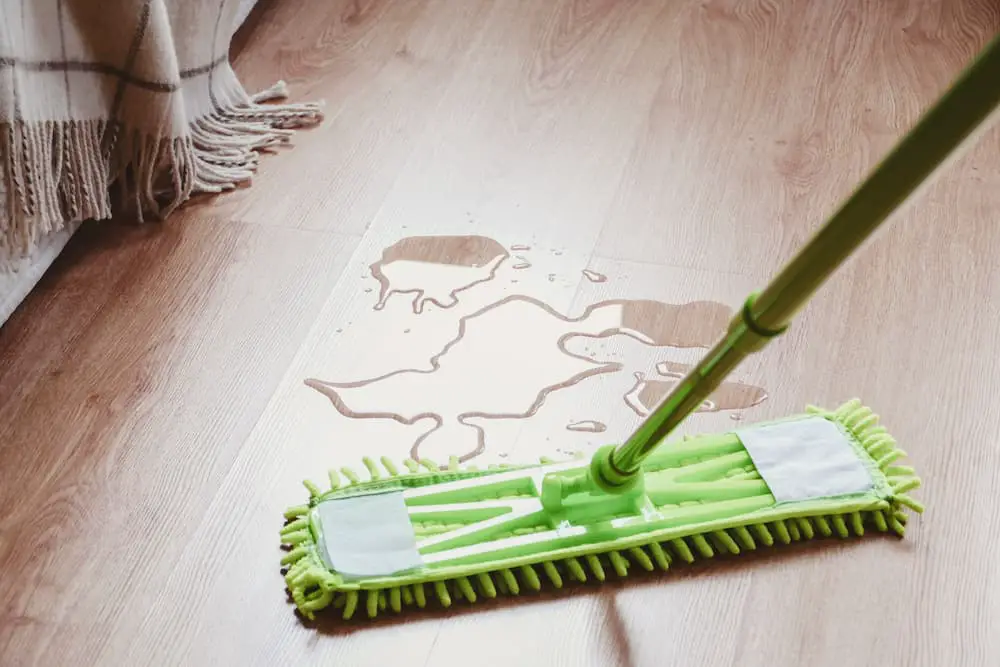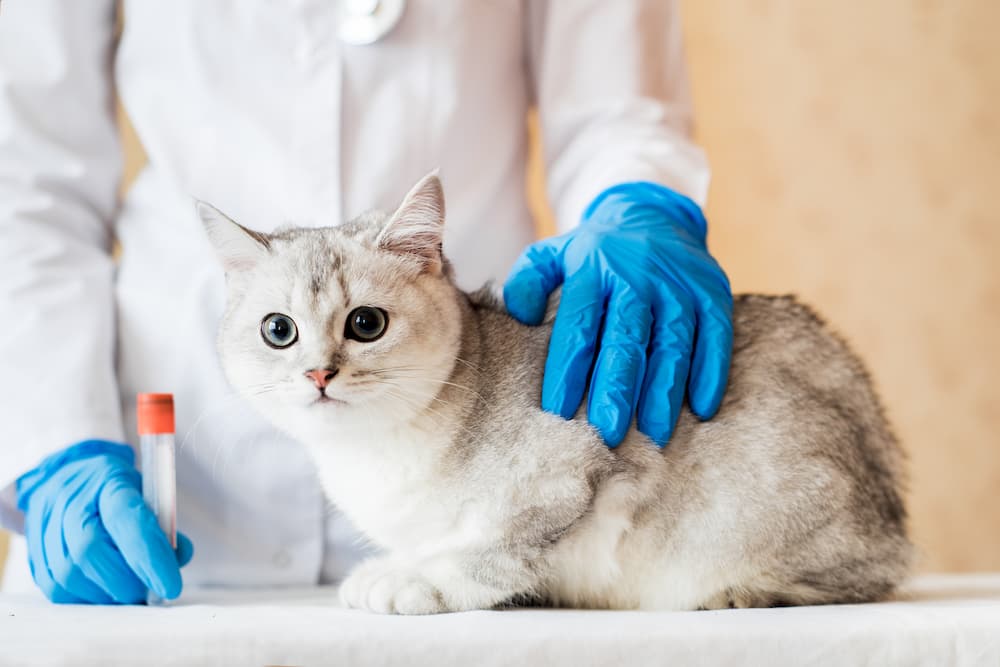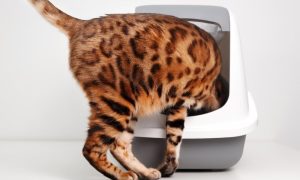
We’ve all been there; you walk into a room and POW! That unmistakable smell of cat pee hits you like a ton of bricks. It’s like our fur-friends have their own pungent perfume and let’s be honest, it’s not exactly the new Chanel N°5. But hey, cats will be cats, right? Accidents happen, and it’s just one of the many joys of sharing our lives with our feline overlords.
When Fluffy misses the litter box, it’s really important to clean it up as soon as possible. That’s not just because it smells worse than your brother’s gym socks. No, it’s because if you don’t, your feline friend might start thinking that spot is her new personal potty. You don’t want that, and trust me, neither does your carpet.
This article is here to save the day (and your nose)! We’ll take a journey from stinky to sparkling, exploring some tried and tested methods for vanquishing that pesky cat pee smell from your home.
Understanding Cat Pee Behavior
First off, let’s put on our detective hats and find out why our regal rulers sometimes decide to pee outside the royal litter box. Cats, like us, have their own set of rules, and one of them can be this—I will pee where I please! But don’t take it personally, it’s not revenge for not feeding them those fancy gourmet treats. It’s often about marking territory. In the cat world, pee is like their signature on a painting; it says loud and clear, “This is mine!”
But that’s not the only reason. Our purrfect pals can also pee outside the box when they’re feeling stressed. Moved to a new place? Got a new dog or a baby? All these changes can throw your cat off balance and trigger the urge to sprinkle some liquid distress signals around your house.
However, there’s a more serious side to the story. Sometimes, Fluffy’s inappropriate peeing might be a sign of a health problem. Urinary tract infections, kidney disease, or diabetes could be shouting out loud from those wet patches on your carpet. So, if the out-of-the-box peeing becomes a habit, it might be time for a quick health check-up with the vet. Always better safe than sorry, especially with our beloved furballs.
Immediate Action Steps

When Fluffy decides to bless your carpet with a sprinkle of kitty champagne, it’s time to act fast! Faster than you’d run to stop your cat from pushing that precious vase off the table. Why? Because the quicker you respond to a urine incident, the easier it is to stop that unforgettable aroma from seeping into your home.
Before you leap into action, make sure you’re armed with the right tools. This is not a mission for the faint-hearted, so your trusty sidekicks should include a couple of paper towels or a highly absorbent cloth, baking soda (yes, the one from your kitchen cabinet), a vacuum cleaner, and a pet-safe enzymatic cleaner.
Now, let’s get down to business. If the accident is fresh and the pee is still wet, start by blotting up as much of it as you can with your paper towels or cloth. Remember, blot, don’t rub! Rubbing will only push the pee deeper into the fibers of your carpet. Just press down on the wet spot and let the towel do the heavy lifting. Once you’ve soaked up as much as you can, sprinkle a generous amount of baking soda over the spot. This kitchen wonder will help absorb the remaining moisture and start to neutralize the odor. Let it sit for a few minutes, then hoover it up before moving on to the enzymatic cleaner.
Cleaning Cat Pee Stains
So you’ve managed to soak up the pee and started the odor-neutralization process – great job! But wait, there’s more! We’ve got to tackle those unsightly stains left behind. Whether it’s carpet, hardwood, or your favorite chair, we’ve got you covered.
For carpets, we suggest using a pet-safe enzymatic cleaner. These cleaners are the superheroes of stain removal. They break down the pee molecules that cause the stains and the smells. Follow the instructions carefully for each product. Generally, you’ll need to apply the cleaner to the stain, let it sit for a while (the longer, the better), and then blot it up.
If you’re dealing with hardwood floors or furniture, be careful not to let the urine sit for too long, as it can damage the finish. Use a damp cloth to clean the area, then apply a cat-safe hardwood cleaner or upholstery cleaner. Always make sure to test any cleaner in an inconspicuous area first. We don’t want any nasty surprises like discolored patches. And remember, folks, patience is key. You may need to repeat the process a few times to completely remove the stain.
Eliminating Cat Pee Odors
Why does cat pee smell so bad and why does the smell stick around longer than your aunt’s holiday visit? Well, it’s all down to the uric acid. This stubborn compound doesn’t dissolve in water and likes to stick around even after you’ve cleaned up. It’s like the party guest that refuses to go home! But don’t worry, we’ve got some scents-ational tips to help you kick that odor to the curb.
Now, let’s get scientific for a moment. Neutralizing cat pee odor isn’t about masking it with air fresheners, it’s about breaking down those pesky uric acid crystals. This is where enzymatic cleaners come back into play. These cleaning powerhouses work by breaking down the bacteria and uric acid causing the stink. It’s like having a microscopic clean-up crew!
We recommend using a cat-friendly enzymatic cleaner specifically designed for pet odors. But if you’re in a pinch, you can also make a homemade solution of equal parts white vinegar and water. Vinegar is a natural deodorizer that can help neutralize the pee smell. Just spray it on the affected area, let it sit for a few minutes, then blot it dry. Repeat as necessary until that nasty odor hits the road!
Litter Box Maintenance and Prevention
Maintaining a clean litter box isn’t just about keeping your nose happy—it’s about keeping your kitty content and helping prevent future accidents. Cats are super clean creatures, and a dirty litter box can be a real turn-off. So, roll up your sleeves, take a deep breath (not too deep, though), and get cleaning! Regular scooping is a must—once or twice daily is purr-fect for most cats. For a deeper clean, scrub the box with warm water and mild, cat-safe soap every week. Remember, strong chemicals can be off-putting for your feline friend’s sensitive nose.
Finding the right spot for the litter box is like playing a game of “hot or cold” with your kitty. Too close to their food and water? Cold. Stuck in a loud, high-traffic area? Ice cold. In a quiet, easily accessible spot? You’re getting warmer! Cats prefer a little privacy when doing their business, so place the litter box somewhere low-traffic but easy for your cat to get to. And if you’re a multiple-cat household, the golden rule is one box per cat plus one extra. No one likes waiting in line, especially not Fluffy.
As for preventing future accidents, remember that cats aren’t just fluffy bundles of love—they’re creatures of habit. Sudden changes can be stressful and may lead to unwanted pee surprises. So, keep things consistent and watch closely for signs of stress or illness. If you notice any changes in your cat’s behavior or litter box use, don’t hesitate to consult your vet. Because, at the end of the day, a happy cat means a happy, pee-free home!

When to Seek Veterinary Advice
Sometimes, cat pee problems can be more than a cleaning challenge. They can be a sign of a health concern. So, how do you know when it’s time to ring the vet?
If Miss Fluffykins is suddenly peeing outside the litter box, especially if she’s always been a litter-box loyalist, or if she’s going more frequently than usual, it could signal an issue. Watch out for signs like straining to pee, blood in the urine, or excessive licking of the urinary area – these are all red flags. Other things to note are changes in appetite or behavior, unexplained weight loss, or if your cat seems unusually thirsty.
Remember, we’re all about happy cats and happy homes here. So, if you’re noticing any of these signs, it’s a good idea to consult your vet. They can rule out any potential health issues and guide you on the right path. After all, the only surprises we want from our furry friends are extra cuddles and the occasional dead mouse gift, not pee puddles!
Dealing with Behavioral Issues
Let’s face it, folks, even our purr-fect little furballs can have their bad days. Cat pee issues can sometimes stem from stress or environmental factors. Maybe Mr. Scratchy-Pants is upset about a new pet in the house, or perhaps Miss Hissy-Face isn’t thrilled about a recent move. Changes in routine, unfamiliar scents, or even a new piece of furniture can throw a cat out of whack. It’s like their world’s turned upside down and they’re saying, “Hey, I’m not cool with this!” The best way to deal with this? Make their environment as stress-free and cat-comfy as possible.
Consider creating a special ‘cat zone’ with comfy beds, scratching posts, toys, and a view of the outdoors. Think of it as a feline retreat – a safe space for them to chill out when the world gets too much. Products like feline pheromone diffusers can also help make your home more cat-friendly. They release a synthetic version of the ‘happy’ pheromones cats naturally produce, which can help soothe stressed-out kitties.
And remember, folks, when in doubt, seek professional help! If peeing problems persist despite your best efforts, it might be time to bring in a feline behaviorist. They’re like cat whisperers, able to understand and address your cat’s issues in ways that we mere mortals can’t. So, don’t be shy about reaching out to the professionals. After all, we all want the same thing: a happy cat, a clean house, and a life free of unpleasant pee surprises.
Final Thoughts on Cat Pee and Odors
Cleaning cat pee and odors can seem like a never-ending battle, but with the right tools and tips, you can say goodbye to those stinky accidents for good. Remember to use enzymatic cleaners to break down the odor-causing compounds, maintain a clean litter box to keep your kitty happy and healthy, and seek veterinary advice if you notice any changes in your cat’s behavior. And don’t forget to pamper your furry friend with a stress-free environment and plenty of love and attention. Because let’s face it, our cats may be mischievous trouble-makers at times, but we wouldn’t have it any other way. After all, they’re just too darn cute!
The Catington Post is reader-supported. That means, if you make a purchase through links on our site, we may earn an affiliate commission. All images and names which are not the property of The Catington Post are the property of their respective owners.
























